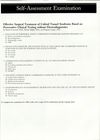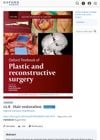Correcting Problems in Hair Restoration Surgery: An Update
May 2004
in “
Facial Plastic Surgery Clinics of North America
”

TLDR New techniques in hair restoration surgery can fix unnatural results from old methods, improving patient self-esteem.
In 2004, Dr. James E. Vogel discussed advancements in hair restoration surgery, focusing on correcting unnatural results from older techniques. Common issues included a straight, pluggy, or cornrow appearance of grafts and the malposition of the anterior hairline. A technique called plug reduction and recycling (PR&R) was detailed, which involved partially excising the plugs, closing the wounds, and transplanting additional hair to the plug reduction sites. The study also highlighted the importance of a symmetric hairline with bilateral temporal recessions, typically 8.0 to 8.5 cm from the midglabela area in mature men. Other issues included blunted temporal angles or hairlines placed too low on the forehead. The study emphasized the importance of patient expectations and careful review of anticipated outcomes. Over a 10-year period, the authors performed approximately 500 corrective hair procedures on 200 patients, with minimal complications. The process of correcting previous hair transplantation results usually took 2 years and several procedures, but was found to be rewarding for patients, enhancing their self-esteem.










